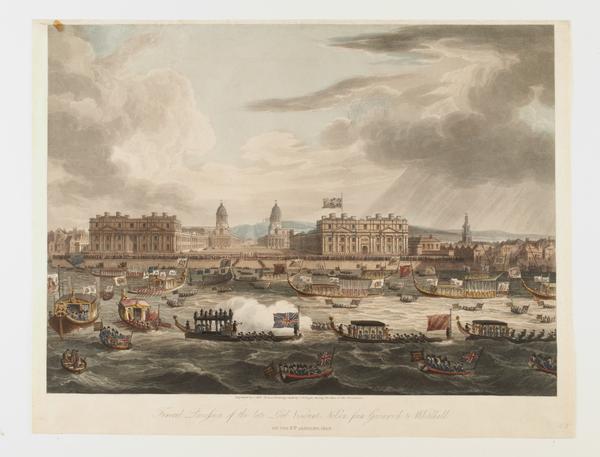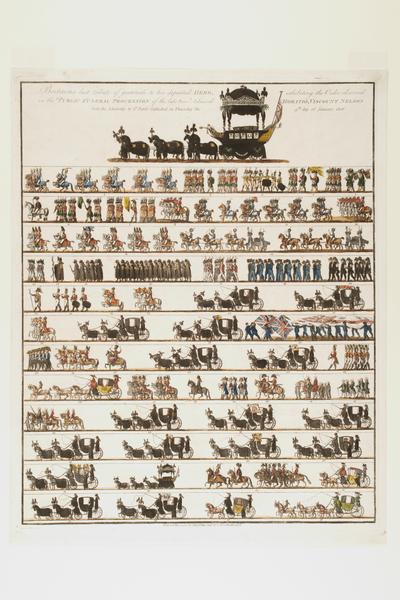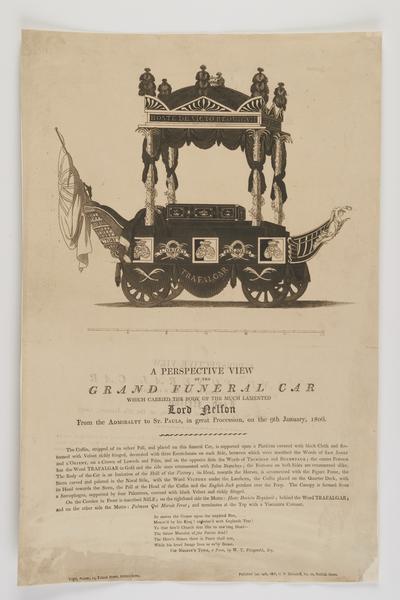Who was Admiral Nelson?
It’s Admiral Nelson who stands on the column in Trafalgar Square. This 19th century naval commander was a national icon.
Trafalgar Square
1758–1805
A naval hero who died in battle
One of London’s most famous statues, Nelson’s Column rises 51.5 metres above Trafalgar Square.
But who was Nelson? And what did he do to win his fame?
Horatio Nelson was a naval commander who became known for his achievements during the Napoleonic Wars, winning the Battle of Trafalgar in 1805 and dying in the process.
His legacy was cemented with a state funeral, his monument and the many pubs named in his honour. An affair with model and actress Emily Hamilton only added to this celebrity.
“Now I am satisfied. Thank God, I have done my duty”
Admiral Nelson's last words, 1805
In the navy
Nelson was born into a fairly wealthy family in Norfolk in 1758. After joining the navy, he became involved in the American War of Independence (1775–1783), and rose through the ranks quickly as the Napoleonic Wars began.
News of Nelson’s achievements at the Battle of the Nile and the Battle of Copenhagen made him famous. His 1797 triumph at the Nile saw him presented with a sword by the Corporation of London, which you can see in our collection.
Nelson lost an arm and an eye
Nelson was seriously injured multiple times during his career.
He lost an eye at the Siege of Calvi in Corsica. At Santa Cruz in Tenerife he lost his right arm. These injuries didn’t hold him back – instead they added to his reputation as a brave hero.
How did Nelson die?
In 1805, Nelson led the defeat of a French and Spanish fleet at the Battle of Trafalgar, sinking Napoleon’s hopes of invading Britain. Britain’s navy remained dominant for decades afterwards.
In the course of the battle, Nelson was shot by a Spanish sniper. He died on his flagship, HMS Victory, in the arms of his flag captain Thomas Hardy, saying: “Now I am satisfied. Thank God, I have done my duty.” Nelson was 47 years old.
After the battle, Nelson’s body was preserved in a barrel of alcohol, and sent back to London, where he was buried in St Paul’s Cathedral.
London Museum’s collection includes many items related to Nelson’s funeral, which give a sense of the significance of his death. It includes a painting by Augustus Charles Pugin showing the funeral procession heading along the Thames from Greenwich to Whitehall.
Nelson’s love affair
Nelson isn’t only famous for his military career. His affair with model and actress Emma Hamilton added extra romance to his story.
Nelson was a married man, having tied the knot with Frances Nisbet in 1787.
Emma Hamilton was also married. Her husband was William Hamilton, British ambassador to the Kingdom of Naples.

Nelson began a high-profile affair with Emma Hamilton, and the couple had a child together.
Emma and Horatio began their affair in Naples. When the couple returned to Britain in 1800, Emma was pregnant with their daughter, Horatia. The affair was tolerated by Emma’s husband, but it scandalised the Admiralty and high society.
Hamilton also has a place in the London Museum’s collection – there’s a guitar she owned, and some of her music books, which contain a number of songs written in tribute to Nelson.












